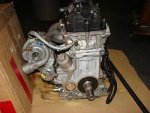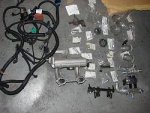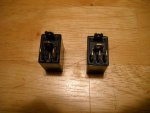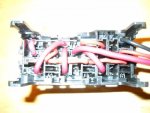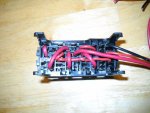relay information
relay information
the relays that came with the original Polaris fuse block are single pole normal open. The brand is "SONG CHUAN" I recommend you stay with this brand because it is a SEALED RELAY, other brands just have snap on covers and are not moisture proof. NOW--------I can not find the original relay part # 871-1a-S-R1. The 1a designated single pole normal open, however Mouser has this relay in designation 871-1c-S-R1,----the 1c designated single pole double throw. You will note in the picture of the relays, one relay has 3 of the smaller blades and the other has only 2, the one with the 3 blades is the single pole double throw, it has a rating of 30 amp /20 amp (30 amp on the closed contact and 20 on the open contact side. ALL OF THE RECEPTICALS FOR THESE RELAYS HAVE THE THIRD POSITION AVAILABLE , just don't put a terminal in it..... These relays are less than $2.50 each and can be obtained from
www.mouser.com part # 871-1c-S-R1
The 3rd and final stage of the wiring will be mating the fuse block to the harness and this will really get "messy" but will try to post something usable with pictures.
I have gone to all of this detail to try and show just how much work is involved in making the harness. The basic Microsquirt with harness is now about $ 390 , a hell of a buy, add another $100 or $150 for all the parts and connectors and fuse block and it is still a good buy but if you want a clean neat set up you will have to do quite a bit of work to make the harness!!!!!!
I point out all of the above because there is no doubt in my mind that someone is going to produce the motor mount, the gearbox adapters, and dampers. Neil at Autoflight already produces the adapter and flywheel and damper for the one piece crank style engine. Hopefully in a few weeks I will have the adapter and flywheel for the flat face crank style engine along with the MaZAK computer program for the adapter. I don't expect Neil to produce a casting for the flat face crank until a market justifies it, so until then it will have to be machined from billet.
when all of this is available you will be able to have a Weber mounted on you bird in about 2 days or less, -----but until someone produces the harness-------you can add at least 2 weeks and a lot of work before it is ready to run.
With Randy out at
www.weberpower.com offering new engines (both the normal aspirated reversed head Redline model and the HSR turbo at around $5000 it is clear this is really getting SERIOUS .
Tony

